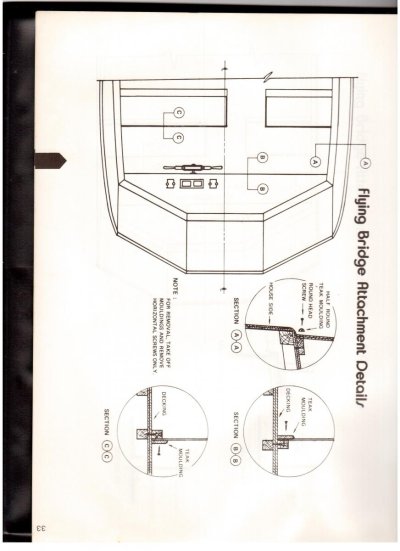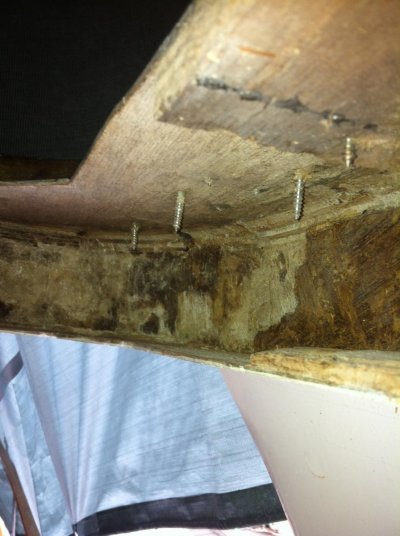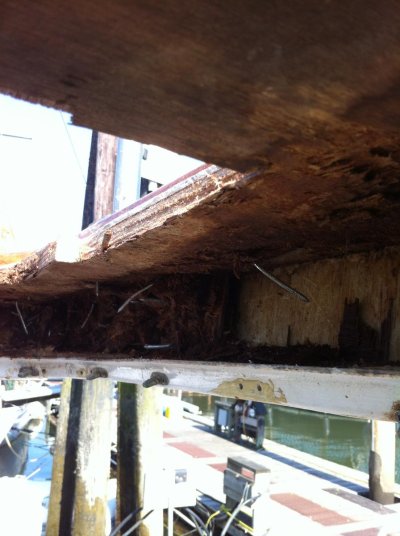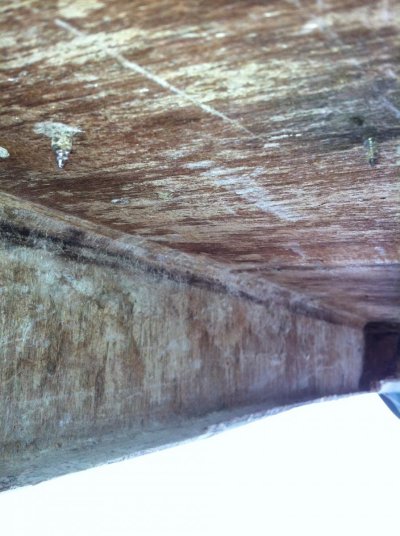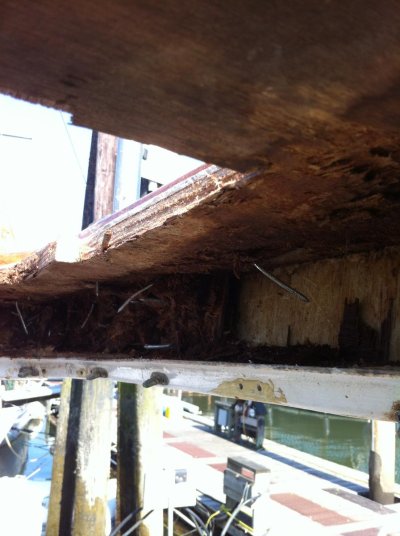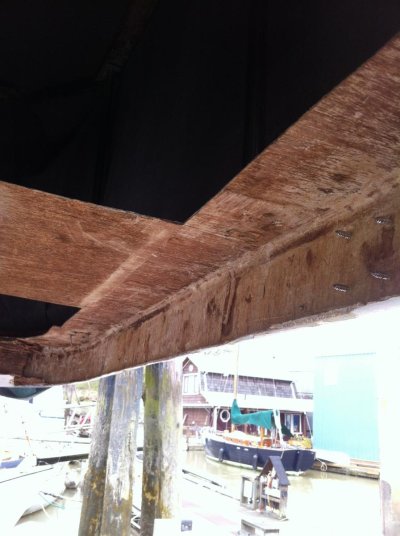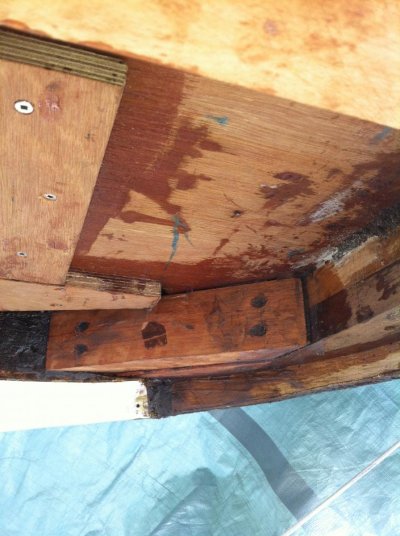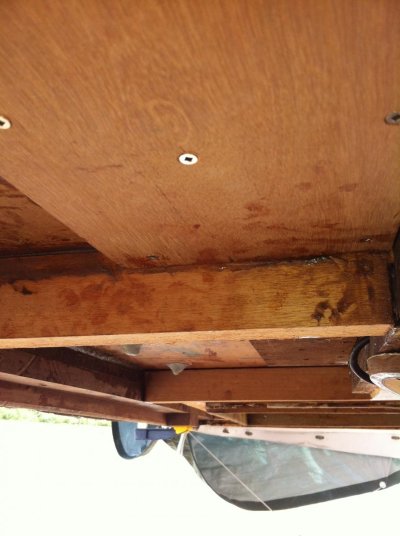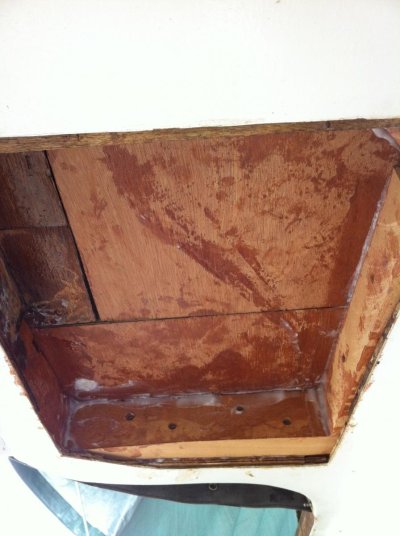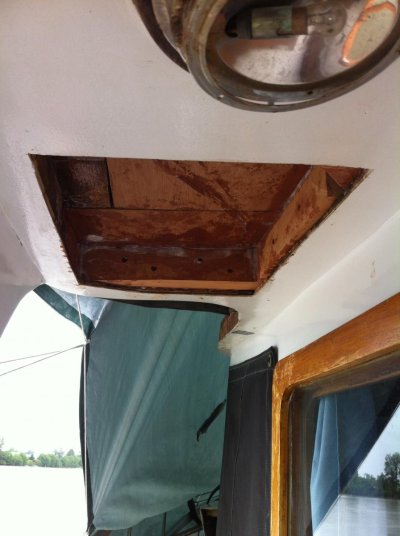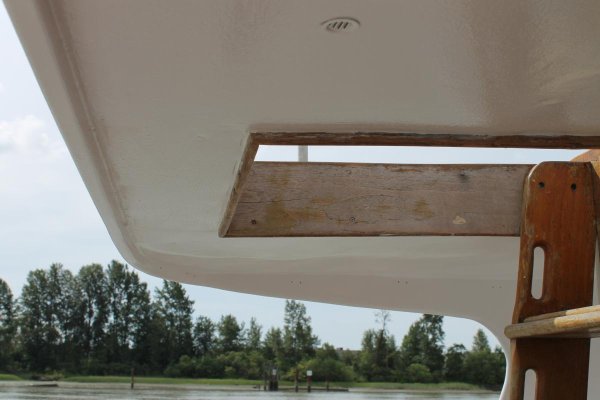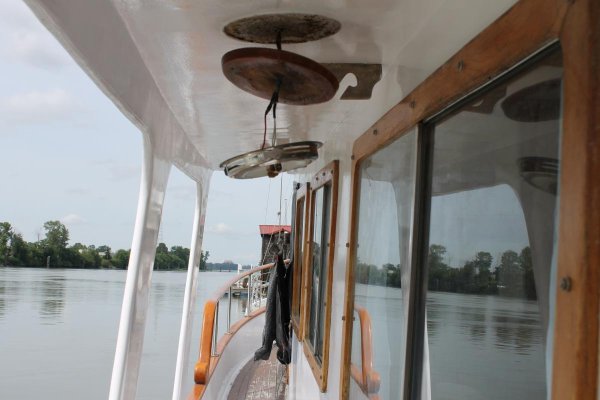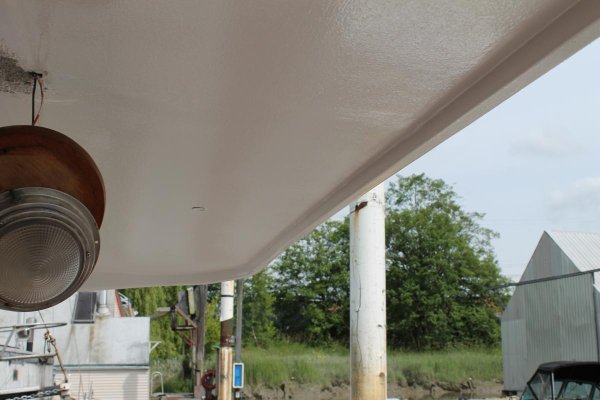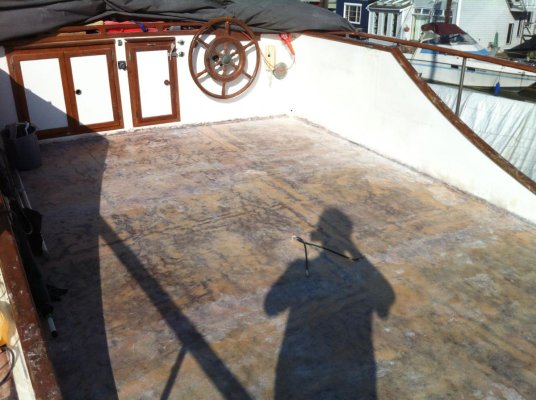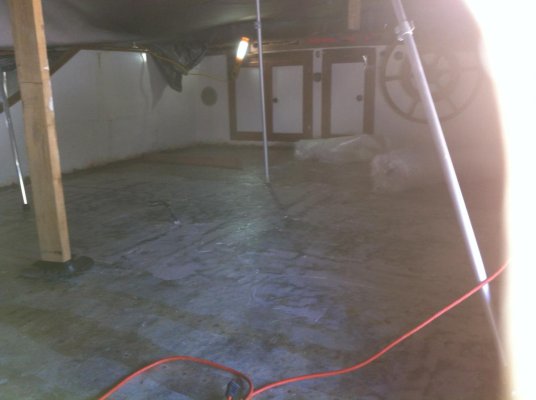Tangler
Senior Member
- Joined
- Jan 29, 2013
- Messages
- 204
- Location
- canada
- Vessel Name
- Between boats
- Vessel Make
- 38' C & L Puget Trawler
Hello fellow trawler owners!! my first time here. dont know how I missed this site before...probably refinishing teak or changing 7 various oil reservoirs or washing and cleaning or...TRYING TO STOP LEAKS! I will be removing the upper deck and glassing it over this year but now I have determined there is a leak problem under the band of teak that girds the flying bridge cowling around the front. I have removed the plugs and screws and tried to cut the sealant still binding the board to the fiberglass but it wont move. Has anyone had experience removing this board before? What did you use to cut the sealant or bedding goop? I was not very successful doing this but I am trying to avoid damage. Is the board flush at the bottom where it meets the fg or is it possible it is "sunk"1/2" or so into the fb beneath the board?

